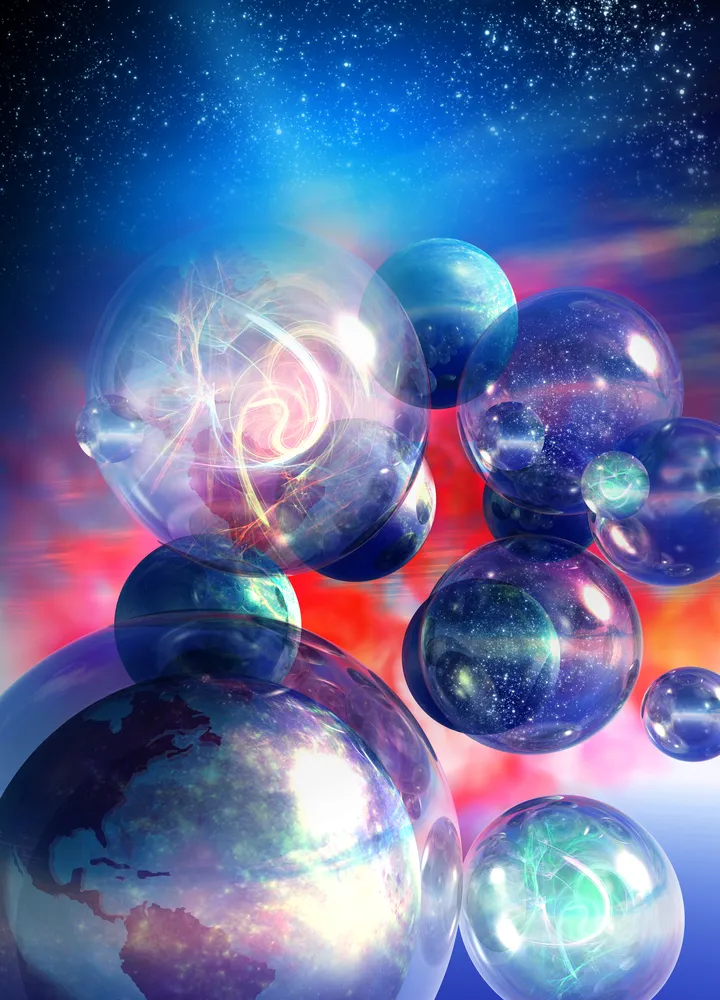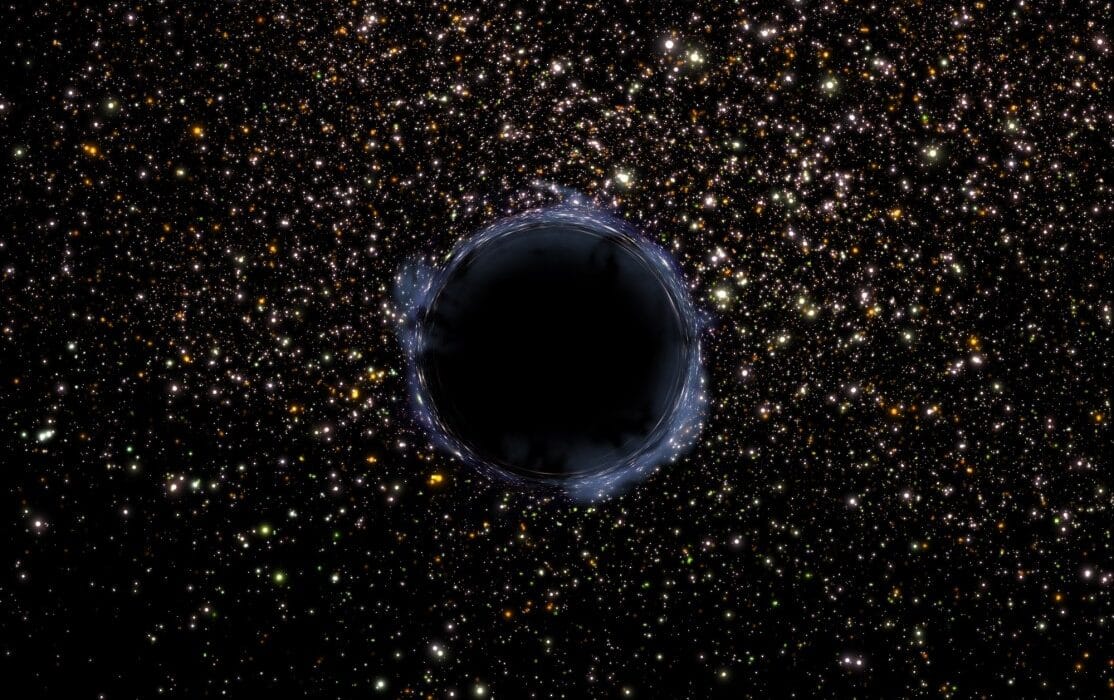Since the dawn of human thought, people have gazed at the night sky and wondered: Is this all there is? When our ancestors looked at the stars, they did not merely see points of light; they saw mystery, eternity, and possibility. The universe seemed vast beyond comprehension, yet it also raised a haunting suspicion—what if our cosmos is not the only one? What if the universe we inhabit, the cradle of galaxies and stars and life itself, is just one among countless others?
For millennia, this idea belonged to philosophers, poets, and mystics. But in the last century, science has begun to peer into this question with sharper eyes, armed not with myths but with mathematics, not with dreams alone but with data. Today, physicists and cosmologists debate whether the “multiverse”—a grand collection of many universes—might be real.
The question is not merely scientific. It is deeply emotional. To imagine other universes is to confront our own smallness, to accept that the reality we hold so tightly may be only a tiny fragment of something unimaginably larger. Yet it also stirs wonder: if other universes exist, what strange laws of nature do they follow? Could life thrive in them? Could there even be versions of us, walking different paths under alien skies?
What Do We Mean by “Universe”?
Before we can explore whether multiple universes exist, we must carefully define what we mean by universe. Traditionally, the universe is everything that exists: space, time, matter, energy, and the physical laws that govern them. By definition, there can only be one universe, because “everything” is an all-inclusive term.
But modern cosmology has complicated this picture. When scientists speak of multiple universes, they usually mean separate regions of reality, cut off from one another in such a way that no information, no particle, no ray of light, can travel between them. Each one is self-contained, obeying its own rules, like bubbles floating in a vast cosmic ocean.
This redefinition cracks open the door to possibility. Suddenly, the universe is no longer “everything” but merely “our everything”—the observable region in which we live. Beyond that, perhaps endlessly beyond, may lie other everythings.
The Birth of Our Universe
To ask whether there are many universes, we must first recall how our own universe came into being. According to the best current evidence, our universe began nearly 13.8 billion years ago in what we call the Big Bang. This was not an explosion in space, but the expansion of space itself from an unimaginably dense and hot state.
In its earliest fraction of a second, the universe is thought to have undergone a period of cosmic inflation, a mind-bendingly rapid expansion. Space itself ballooned faster than the speed of light, stretching quantum fluctuations into seeds of galaxies. Inflation solved many puzzles—why the universe looks so uniform, why it is so flat, why no magnetic monopoles are found.
Yet inflation also opened a Pandora’s box. If inflation happened once, could it happen again, and again, in other regions? If so, each burst of inflation could create its own pocket universe. Suddenly, our Big Bang may not have been the beginning of everything, but only the beginning of our part of everything.
Eternal Inflation: A Cosmos of Bubbles
One of the most powerful scientific ideas that suggest a multiverse is eternal inflation. According to this theory, the process of inflation never stops completely. Instead, some regions of space finish inflating, cooling into universes like ours, while other regions continue inflating endlessly.
The result is a “multiverse” of bubble universes, each one a newborn cosmos with its own Big Bang. These bubbles may have different properties—different strengths of gravity, different numbers of spatial dimensions, even different laws of physics. We live inside one such bubble, unaware of the countless others expanding beyond our reach.
The picture is almost dreamlike: a vast, foaming sea of universes, each sealed from the others, each endlessly growing. Our universe, so vast to us, could be no more than a soap bubble in an infinite cosmic froth.
But if these other universes are sealed off, how could we ever know they exist? Science thrives on evidence, not imagination. Here lies the central tension of the multiverse idea: it is breathtaking, but is it testable?
The Quantum Multiverse
Another path to multiple universes comes not from cosmology but from quantum mechanics—the strange rules that govern the microscopic world of atoms and particles.
In quantum theory, particles can exist in many possible states at once, described by a mathematical object called a wavefunction. When we measure the system, we find only one result. But what happens to the other possibilities?
One radical interpretation, known as the “many-worlds interpretation,” suggests that all possibilities are realized, but in different universes. Every time a quantum event happens, reality splits. In one universe, an electron spins up; in another, it spins down. In one universe, you read this sentence; in another, you turned away.
If this view is correct, then the multiverse is unimaginably vast, branching into new realities at every moment. Unlike the bubble universes of inflation, these universes are not distant in space but entangled with every quantum event. It means there could be universes in which history unfolded differently—where dinosaurs survived, where civilizations rose and fell, where another version of you made different choices and lives a different life.
This interpretation is controversial. Some physicists see it as unnecessary speculation, while others argue it is the simplest explanation of quantum mechanics. Either way, it challenges us to rethink the meaning of reality itself.
String Theory and the Landscape of Universes
A third path to the multiverse comes from string theory, an ambitious framework that seeks to unify all the forces of nature. String theory proposes that the fundamental building blocks of reality are not particles but tiny vibrating strings. The vibrations of these strings give rise to particles and forces, including gravity.
But string theory is not a single theory—it has a vast “landscape” of possible solutions. Depending on how the extra dimensions of space are curled up, the laws of physics could look very different. Some versions of the theory suggest there could be 10^500 possible universes, each with its own set of physical constants.
If this is true, our universe is not unique but one point in a vast cosmic landscape. The fact that our universe allows life—because its constants are just right—may not be a coincidence at all, but simply a matter of selection. Out of countless universes, only those with the right conditions for stars, planets, and chemistry would host observers like us. This idea is called the anthropic principle.
The Anthropic Puzzle
The universe seems finely tuned for life. If gravity were slightly stronger, stars would collapse too quickly. If the cosmological constant were slightly larger, galaxies would never form. The chances of these constants aligning to permit life appear astronomically small.
The multiverse offers a possible answer. If there are countless universes with varying constants, then it is not surprising that at least one of them, by chance, has the right conditions for life. We live in such a universe simply because we could not exist in any other.
This reasoning is controversial. Some scientists see it as giving up the search for deeper explanations. Others argue it is a natural outcome of the multiverse. Either way, it forces us to confront profound questions about our place in reality: are we here because of necessity, or because of cosmic lottery?
Searching for Evidence
The multiverse is a seductive idea, but science demands more than beauty and imagination. How could we ever test the existence of other universes?
Some physicists suggest that bubble universes might occasionally collide, leaving imprints in the cosmic microwave background—the faint afterglow of the Big Bang. Others look for indirect clues, such as patterns in cosmic inflation or the distribution of fundamental constants.
Yet many argue that the multiverse may be forever beyond our reach. If other universes are truly separate, sealed away with no possibility of communication, then they are unobservable by definition. In that case, is the multiverse science, or philosophy dressed in scientific language? This debate cuts to the core of what science is: a method of testable hypotheses, or a broader exploration of possible realities?
The Emotional Weight of Other Universes
Beyond equations and data, the multiverse carries deep emotional resonance. If there are infinite universes, what does it mean for human significance? Some find the idea humbling, even frightening: our struggles, our loves, our triumphs—could they be replicated endlessly in other universes, making each version meaningless?
Others find it liberating. If reality is infinite, then every possibility exists somewhere. Every dream is real in some universe. Every life matters because it is one thread in a cosmic tapestry beyond comprehension.
For Einstein, the universe was not only physics but also wonder. “The most incomprehensible thing about the universe,” he once wrote, “is that it is comprehensible.” The multiverse pushes this mystery to new heights. Can we comprehend not just one universe, but many?
Philosophical Echoes
The idea of many worlds is not new. Ancient Hindu cosmology imagined endless cycles of universes, born and destroyed in infinite succession. Greek philosophers like Democritus speculated about countless worlds, some with life, some without. In medieval times, scholars debated whether God could create multiple universes.
Science now gives new flesh to these old intuitions. Whether through inflation, quantum branching, or string landscapes, the possibility of many universes brings philosophy and physics into intimate dialogue. Perhaps the multiverse is the ultimate bridge between myth and mathematics.
Where Science Meets Mystery
So, is our universe just one of many? The honest answer is that we do not know. The evidence is tantalizing but incomplete. The theories are bold but not yet proven. The multiverse remains, for now, an open question.
Yet the search itself is part of the story of science. The fact that human beings, made of stardust, can even ask such questions is a triumph of the human spirit. Whether or not other universes exist, our universe is vast, mysterious, and filled with wonder.
To imagine the multiverse is to stretch the limits of thought, to push against the boundaries of the knowable. It may be that someday, evidence will tip the scales. Or it may be that the multiverse will remain forever beyond reach, a cosmic horizon we can never cross.
Conclusion: The Universe Within
In the end, the question of many universes reflects not only our curiosity about the cosmos but also about ourselves. To ask if our universe is one of many is to confront the fragility of human meaning, the vastness of possibility, and the mystery of existence.
Perhaps we are alone in a singular cosmos. Perhaps we are one bubble in an infinite sea. Either way, the journey of discovery continues. The night sky still calls, whispering of secrets not yet revealed. And as long as we keep asking, keep wondering, keep seeking, we are part of something greater than any universe: the boundless curiosity of the human mind.






